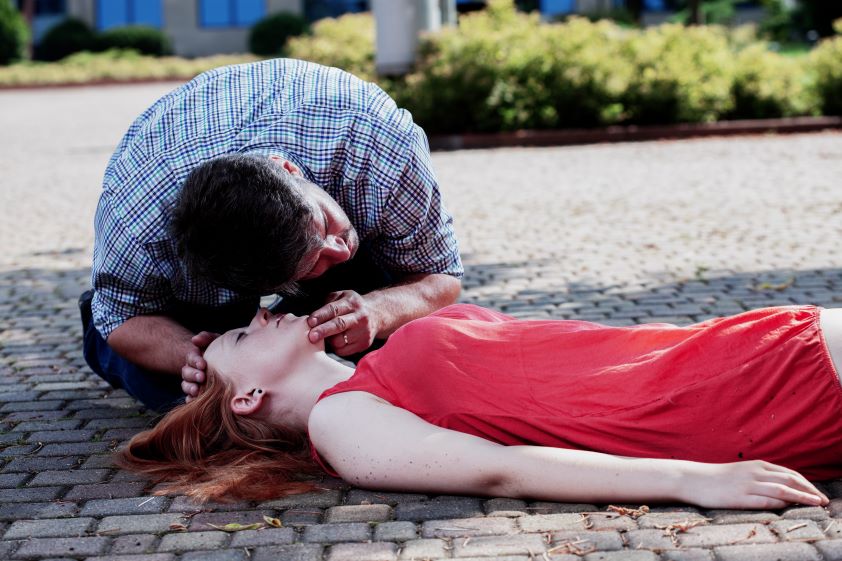Introduction
In Australia, the importance of having actually an Automated External Defibrillator (AED) ready can not be overemphasized. Unexpected cardiac arrest can strike any person, anywhere, at any time, and being prepared can save lives. Nonetheless, possessing an AED is just the start; appropriate upkeep and battery treatment are essential components that make certain these life-saving devices function ideally when needed.
Keeping your AED prepared includes comprehending its parts, consisting of battery maintenance, which plays a considerable role in the tool's effectiveness. This write-up intends to discover necessary battery maintenance ideas for Australians while also offering insights into AED use, regulations bordering defibrillators, and training sources readily available in Australia.
Automated External Defibrillator Explained Australia
Understanding AEDs
An Automated External Defibrillator (AED) is a portable gadget designed to deal with individuals experiencing abrupt heart attack. These tools assess the heart's rhythm and can provide an electrical shock to restore normalcy.
How Does an AED Work?
When connected to a client by means of adhesive electrodes, the AED analyzes the heart's rhythm and establishes whether defibrillation is needed. It gives clear sound and aesthetic triggers to guide users with the process.
Importance of Accessibility
In Australian neighborhoods, having obtainable public AED areas can significantly enhance survival rates during cardiac emergency situations. This availability makes certain that onlookers can quickly get the gadget when every 2nd counts.
How to Utilize AED Step by Step Australia
Step 1: Call Emergency Services
Before using an AED, it's important to call emergency situation services quickly. This guarantees professional help gets on its method while you give assistance.
Step 2: Turn on the AED
Once you have the tool, transform it on. A lot of designs will certainly supply distinct guidelines directing you via each step.
Step 3: Connect Electrodes
Open the person's t-shirt and affix the sticky electrodes as suggested on the pads. Make certain correct placement-- one pad takes place the upper right chest, while the other is placed on the reduced left side.
Step 4: Evaluate Heart Rhythm
Allow the AED to assess the heart rhythm. See to it nobody touches the individual throughout this time.
Step 5: Provide Shock if Advised
If a shock is suggested, eliminate every person from call with the person and press the shock button when prompted.
Step 6: Continue CPR as Directed
After supplying a shock or if no shock is encouraged, proceed performing mouth-to-mouth resuscitation until emergency services arrive.
AED and CPR With each other Australia
The Harmony Between AED and CPR
Combining CPR with an AED takes full advantage of survival chances throughout a heart attack circumstance. While mouth-to-mouth resuscitation maintains blood flow to vital body organs, utilizing an AED recovers typical heart rhythms.

Importance of Training in Both Areas
Understanding exactly how to do both CPR and utilize an AED properly raises self-confidence in emergencies. Enlisting in defibrillator training programs readily available throughout Australia boosts abilities significantly.
AED Use on Children Australia
Pediatric Factors to consider for AED Use
While adult pads can be utilized on kids over 8 years of ages or considering greater than 25 kg, specific pediatric pads are suggested for more youthful kids.
Special Instructions for Children
If you're utilizing an AED on a kid or infant:
- Ensure proper pad placement. Follow particular directions supplied by pediatric standards concerning shock delivery.
Always speak with neighborhood protocols for using an Automated External Defibrillator discussed especially for kids in Australia.
AED Battery Maintenance Australia
Regular Battery Checks
Regularly examine your AED's battery condition indication-- most tools have clear indications revealing whether batteries are operating efficiently or require replacement.
Replacement Schedule
Typically, you need to replace your AED battery every 2 to five years depending upon use frequency and manufacturer guidelines.
|Kind|Substitute Regularity|| --------------------|----------------------|| Standard Battery|Every 2-5 years|| Lithium Battery|Examine every year|
Storing Batteries Correctly
Store batteries in a trendy, dry place far from direct sunlight or severe temperature levels to extend their life span effectively.
Workplace AED Demands Australia
Legal Commitments for Businesses
Under Australian regulation, companies are required to assess risks connected with unexpected heart attacks in their work environment atmospheres. This consists of having easily accessible first aid tools like an AED.
Implementing Work environment Policies
Developing plans bordering emergency treatment reaction plans-- consisting of training staff on how to utilize an AED-- ensures that work environment safety methods are effective.

Public AED Locations Australia
Mapping Out Public Accessibility Points
Various neighborhood campaigns have actually focused on drawing up public access factors where individuals can discover nearby Automated External Defibrillators discussed plainly on-line or with mobile apps.
|City|Public Locations|| ---------------------|--------------------------------------|| Sydney|Parks & & Buying Centres|| Melbourne|Train Stations & & Arenas|| Brisbane|Airports & & Area Hubs|
This availability equips residents with understanding concerning where they can situate these vital tools promptly throughout emergencies.
Defibrillator Training Training courses Australia
Overview of Readily available Courses
Training programs are vital for teaching people exactly how to run an Automated External Defibrillator successfully while additionally incorporating CPR techniques.
Course Providers
Several companies use these training programs throughout Australia:
- St John Ambulance Red Cross Local Health and wellness Departments
Each course covers necessary skills tailored for different audiences varying from work environment setups to neighborhood groups.
Defibrillator Regulations Australia
National Guidelines
Australian regulation relating to defibrillators mainly focuses on ensuring availability within public spaces while advertising community awareness of their uses and benefits.
Key Legislation Factors:
- Accessibility guidelines requiring public locations such as colleges and mall to have defibrillators conveniently available. Encouragement of community education programs concerning unexpected cardiac arrest administration making use of both mouth-to-mouth resuscitation and AEDs.
Choosing Right AED Australia
Factors To Consider When Picking An AED
When picking an Automated External cpr certificate albury Defibrillator clarified within your environment:
User-Friendliness - Guarantee it has clear instructions. Portability - Take into consideration weight if it requires moving frequently. Cost-Benefit Analysis - Evaluate pricing versus prospective lifesaving benefits. Brand Reputation - Study reviews about integrity from various other users.Selecting wisely can make sure that whatever circumstance develops down under; you're well-prepared!
Keeping Your AED Ready: Necessary Battery Upkeep Tips for Australians
Maintaining your Automated External Defibrillator's battery is vital for its operational preparedness during emergency situations. Routine examinations not just prolong battery life yet likewise make certain that you're furnished with fully functional equipment when it matters most-- this might imply life or death!
Remember always to follow supplier guidelines concerning storage space problems; keep your tool clean from dust accumulation by cleaning surface areas routinely without damaging elements inside! Additionally-- it's sensible practice never underestimate checking expiration days either!
FAQs Concerning Maintaining Your AED Ready in Australia
Q1: Just how commonly should I inspect my AED? A1: It's suggested to examine your Automated External Defibrillator monthly or according to maker referrals for optimum performance checks!
Q2: Where can I take a defibrillator training course? A2: Several organizations use training courses throughout various places consisting of St John Rescue; check regional health and wellness departments too!
Q3: What takes place if my battery expires? A3: If your battery ends or shows reduced status indicators-- change it instantly! A non-functional unit can lead put lives at risk throughout emergencies!
Q4: Exist legal requirements for work environments concerning defibrillators? A4: Yes! Australian law mandates that companies assess threats relevant sudden heart attack events guaranteeing sufficient first-aid procedures including accessible defibrillation equipment!
Q5: Can I utilize adult pads on children? A5: Yes-- yet just if they weigh more than 25 kg; or else pediatric-specific pads must be utilized due properly adhering security standards laid out by regional wellness authorities!
Q6: What types of settings require publicly available defibs? A6: Areas like colleges parks shopping centers stadiums and so on, must have simple gain access to points making sure every person recognizes where help lies accessible when needed most!
Conclusion
In final thought, maintaining your Automated External Defibrillator ready surpasses plain possession; it requires continuous commitment towards maintenance techniques ensuring its capability remains intact for unpredicted scenarios arising all of a sudden! By welcoming routine checks concentrating especially upon battery status understanding exactly how vital this function plays-- also in the middle of disorder-- you stand far better prepared conserving lives not just today yet well right into future possibilities as well! Constantly remember-- the best preparation originates from cpr albury expertise used proactively instead of reactively when seconds truly count!